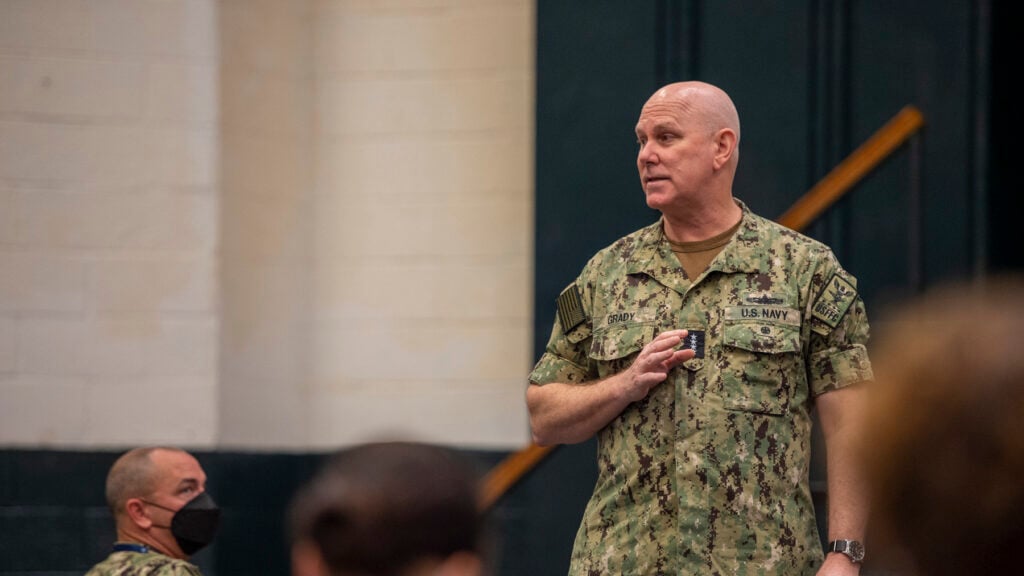
Adm. Christopher W. Grady, commander U.S. Fleet Forces Command, was nominated on Nov. 2, 2021, as vice chairman of the Joint Chiefs of Staff. (US Navy/Petty Officer 1st Class Theodore Green)
WASHINGTON: The beefed-up Joint Requirements Oversight Council (JROC)’s new-found influence is apparent in the fiscal 2023 budget’s orientation toward joint warfighting, according to Vice Chairman of the Joint Chiefs of Staff Adm. Christopher Grady, who leads the council.
“I’m very confident that the JROC is having a significant impact, which is what I’m responsible to help with,” Grady told reporters Monday during the Pentagon’s budget rollout.
He stressed that Secretary of Defense Lloyd Austin has been pushing for “a straight line from strategy to budget” — meaning that budget requests should be directly aligned with implementation of the Joint Warfighting Concept (JWC).
The JWC, signed by Austin last June, will outline the new American way of war known as All Domain Operations: next-generation, information-based wars using enormous amounts of AI-driven analysis across the five domains of land, air, sea, space and cyberspace.
Grady explained that this means the JROC, comprised at its top level of the vice chiefs from all the services, has been charged with ensuring that service-proposed funding supports the capabilities needed to substantiate the JWC’s four “functional battles:” command and control (C2), contested logistics, joint fires and information advantage.
“I’m pretty confident that — having worked with vices now, and with the support of the team and in the SecDef’s office, particularly technology and acquisition leaders — that we have been able to go from concept to requirement within several strategic directives that we signed out of the JROC,” he said.
Grady provided two examples of where JROC’s new strategic directives related to the JWC, and in particular Joint All Domain Command and Control (JADC2), were tracked to the FY23 budget request.
“The first would be about $7 billion in highly lethal precision guided munitions. That’s one that derived from those strategic directives that the JROC put out,” he said. And a second is $11 billion in funds for the Pentagon’s myriad communications networks that are “critical to command and control, another one of those functional battles that is so important to us,” he added.






















